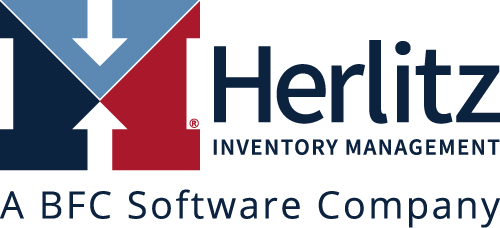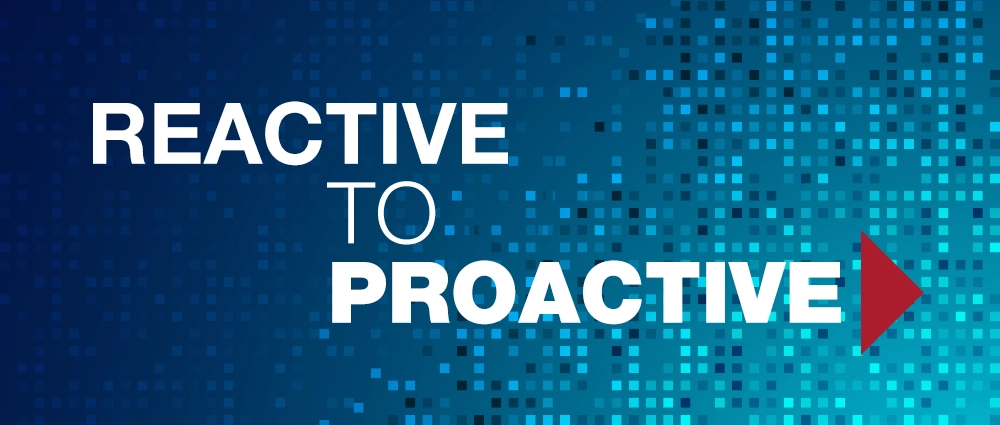Are You Stuck in a Culture of Busyness?
I have helped hundreds of companies solve inventory management and supply chain challenges. I spent nearly my entire career in this industry, and I have seen what great buying practices look like and the results they bring, as well as bad buying practices and their consequences. I’ve worked with wholesalers and retailers using every combination of buying solutions.
There is one thing that separates effective buyers from the rest. They are proactive instead of reactive. In my experience, most buyers are reactive instead of proactive. That is not a reflection of their professionalism. For buyers, being proactive often isn’t a choice because they are severely limited by the tools they are given. Due to these limitations, buyers do all they can but end up stuck in a culture of busyness.
Explore the difference between a proactive and reactive buyer, and how buyers can become more proactive (with and without a new inventory management system).
The Cons of Reactivity
To be proactive, you must create or control a situation by causing something to happen rather than waiting for something to happen and responding to it later. Reactive is the opposite. It means you respond to a situation that has already happened without being able to control it.
Reactive buying typically means you are buying later than you should. It means you didn’t have the forecasts you needed to make good decisions. It means inventory fluctuations aren’t accurately measured or are analyzed too late to impact today’s purchases.
The most glaring drawbacks of being a reactive buyer are:
- Missed costs saving opportunities from volume discounts
- Wrong inventory levels, leading to missed sales or overstocking
- Poor supplier relationships
- Fluctuating demand can easily cause supply chain disruptions if buyers aren’t proactive
An old sewing idiom says, “A stitch in time saves nine.” A proactive buyer who can plan will spend much less energy than a reactive one. It’s much easier to prevent fires than to put them out.
Becoming a Proactive Buyer
Whether you are a buyer or an executive, being more proactive is far better than being reactive. Here are some ways to make your purchasing team more proactive.
Without a New Inventory Management System
Becoming proactive without a strong inventory management system is a tough route. Our recommendation would be to invest in a system for your buyers. Your sales department, marketing team, accountants, and HR/payroll teams all have systems. Buyers are responsible for your most important asset. Get them a quality system and start improving your bottom line fast.
However, buyers without a system can create a detailed checklist. Ensuring you have good buying practices in place and a process to follow can help guide your day-to-day activities, so you aren’t left scrambling to place last-minute POs. When you rush, you are prone to making errors. Slow down, plan, and figure out a process that works best for your team.
Features of Inventory Management Software That Promote Proactive Buying
Inventory management systems, like HIMPACT, will transform your purchasing department within a few weeks. In the HIMPACT system, for example, the entire workflow is based on management by exception. Vendors that must be placed today bubble to the top of the workflow. Demand and lead time outliers are presented to the user the day after things went wrong, not in an end-of-week summary report.
One of the most proactive features of HIMPACT is Fill-in Open Order Analysis. This gives the buyer a list of suggested “recovery” ordering options for items on current POs that would already have lost sales by the time they are received. This feature lists:
- Every item
- Each item’s projected future out-of-stock date
- The projected lost sales with recovery orders
- Order dates
- Pricing and lead times from secondary suppliers
This level of information is nearly impossible for buyers to get manually because there are too many variables and calculations to make. Another feature, Lot Analysis, helps buyers know about spoilage issues months in advance so these items can be promoted before they need to be tossed in the dumpster.
HIMPACT Empowers Proactive Buying
Again, HIMPACT was built to empower proactive buying. A “management 101” adage is, “The earlier you are alerted to a future problem, the more options there are to deal with it. HIMPACT is designed to help buyers deal with Supply Chain disruptions by giving the earliest possible warnings. Here are just a few of the features that help our buyers make more profitable buying decisions:
Order Analysis
Being proactive starts with having information. Order Analysis is a tool within HIMPACT designed to give buyers the detailed information they need to make proactive decisions that enhance operations and customer satisfaction.
The tool provides daily insights into inventory, demand, and outstanding orders. It identifies potential service and stock issues early so you can act early.
Lot Analysis
Spoilage is a major challenge for retailers and wholesalers. Lot Analysis helps buyers make better, more profitable replenishment decisions on items with a short shelf life. It works by showing what short shelf-life items were received, how much is on hand, and how much will be sellable before expiring. It also includes a robust spoils projection and automatically orders more inventory to avoid potential out-of-stock situations.
Lead Time Forecasting
In HIMPACT, buyers can review lead-time performance daily as each purchase order is received. It also tracks lead time and lead time variability by vendor and SKU, which are also automatically included in safety stock calculations. When vendor on-time performance shifts, buyers are alerted.
Long Term Out (LTO) Analysis
During the pandemic, most vendors were transparent about the items they could and could not ship. Today, that’s not exactly the case and vendors guard their long-term outs more closely. And as I write this, I’m once again seeing and hearing that vendor fill-rates are dropping.
We built LTO to help buyers identify items with lost sales. As a result of analyzing the customer order history, we had a serendipitous feature fall at our feet—a realistic pipeline fill projection. For every order, HIMPACT LTO analysis shows all items currently in LTO status. LTO’s pipeline fill is updated every day so that once the vendor is back in stock, HIMPACT has a suggested pipeline fill number for the buyers at their fingertips. Until the vendor is shipping, this helps buyers proactively source substitutes to keep product flowing to customers.
Advanced Shipping Notice
No buyer wants to receive an order with items missing. Advanced Shipping Notice (ASN) shows buyers which SKUs will be missing from their order days before the truck arrives. This provides buyers flexibility and time to make decisions that are best for their company and customers.
Take Control of Your Buying
HIMPACT was created with buyers in mind. It empowers wholesalers and retailers and removes the guesswork of knowing when, how often, and how much to buy. Want to see it in action? Schedule a demo with our team and see how HIMPACT will improve your customer service levels while reducing inventory and boosting profits.

